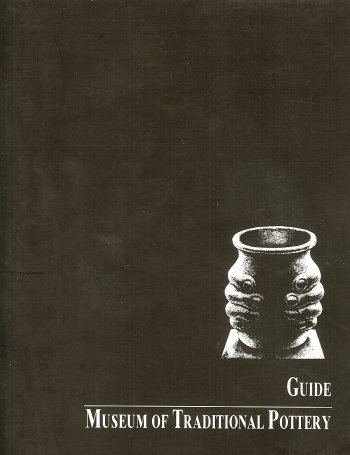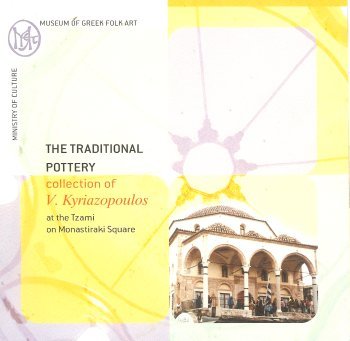Quick! What is the difference between The Museum of Traditional Pottery and the Traditional Pottery Collection?
On our first expedition (to Plato’s Academy for those who have not been paying attention) we noticed that the street map from the hotel referred to a “Museum of Traditional Plottery” near the Kerameikos. With that kind of advertizing, it naturally went on The Plan.
We evidently got around to it, on a side street between the Kerameikos and the Benaki Annex, across from a synagogue, which synagogue I guess explains the police in the street. The first time we went in, someone told us it was closed, despite the open door and despite it being within the opening hours posted on said door. Maybe we should have drawn a conclusion at this point.
That simply whetted the appetite for the glories of Traditional Plottery and we returned. Once again we were alone. We convinced a rather vague, perhaps preoccupied, fellow to take our Euros in exchange for entry. (He could certainly use a workshop on customer relations from the Scots Tourism Board.) He handed us a black guide, and went ahead of us opening rooms for us, this being done about an hour after the posted opening time.

Try http://odysseus.culture.gr/h/1/eh151.jsp?obj_id=3421
Despite this rather tedious introduction, the display was interesting. Its focus is on making pottery. Potters were itinerant; I didn’t know that. Though most settlements had areas devoted to the kilns, the artisans roamed in pairs. One of the pair was the potter and the other did the heavy lifting, e.g., gathering the fuel. One of the remarkable things about Ancient Athens was that it very populous; so large as to have potters permanently engaged in meeting the local demands. I also discovered that even red clay vases were everyday items in the ancient world, not museum pieces, and were readily disposed of as fashions in shapes or colors changed.
Less that ten minutes away by foot, is the “Museum of Greek Folk Art: The Traditional Pottery Collection of V. Kyriazopoulos at the Tzami on Monastiraki Square.” Quite a mouthful. That title is impressive but in fact it is small collection of works from three artisans from the 19th Century. It seems odd to call such a narrowly based collection national, but the Greek Ministry of Culture feels no such compunction.

Try http://travel.webshots.com/album/558117284hmdxIm
Of greater moment to me than the collection was the building itself, originally a mosque. I have never been in before but I have now. Can’t say any more than that.
